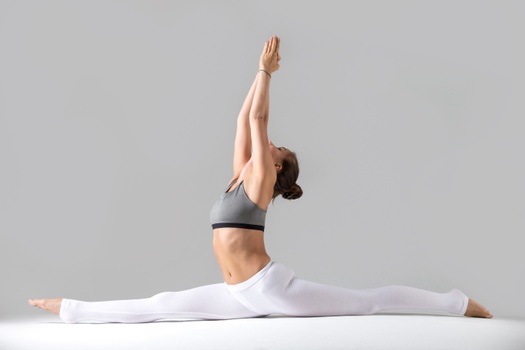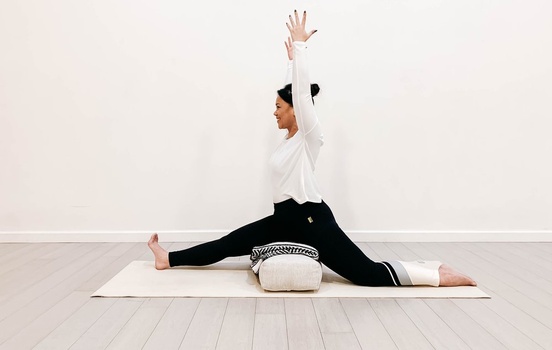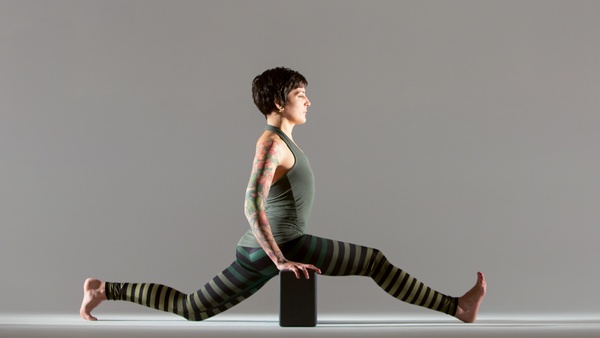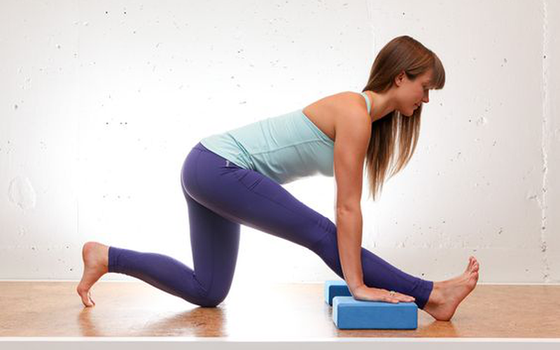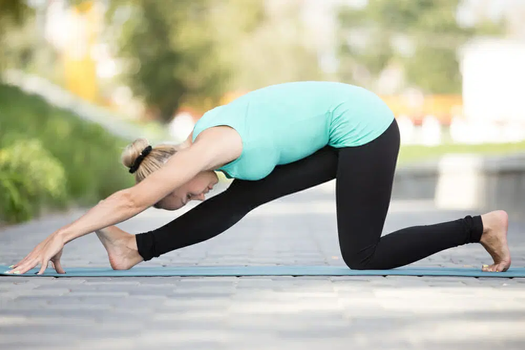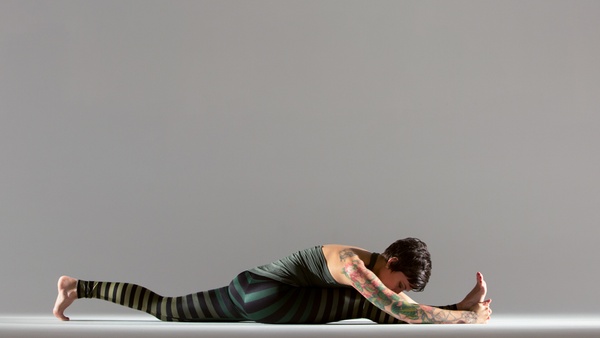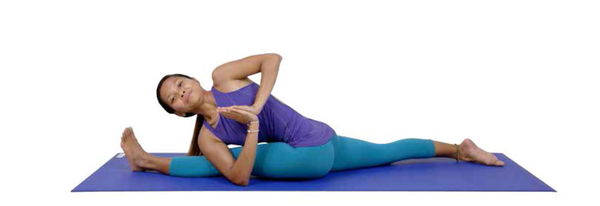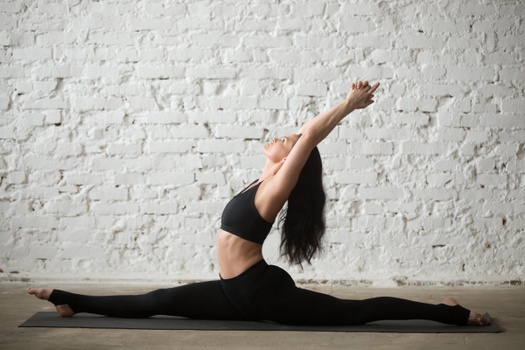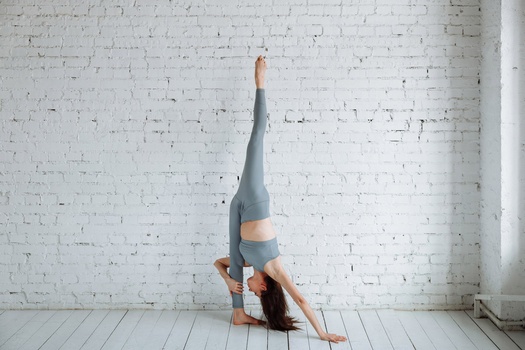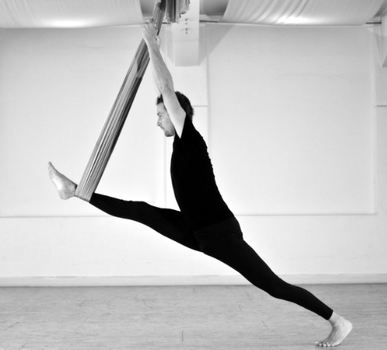Hanumanasana is a powerful lower-body stretch that can be overwhelming to learn. So, we’ve provided a step-by-step posture guide. Take a look below:
Part 1 - Preparatory Poses for Hanumanasana
Warm up by stimulating blood circulation in your glutes, hamstrings, inner thighs, ankles, and spine.
1. Malasana (Yogi Squat) - This pose is excellent for activating the entire lower body, as well as the spine. Start by standing in Mountain pose for a few deep breaths. Squat deeply with your legs wider than shoulder-width apart.
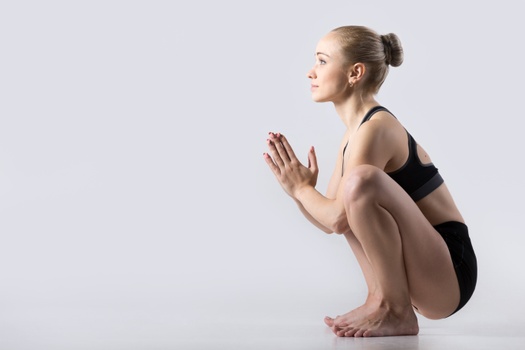
Keep your spine straight, bring your arms close to your chest in Anjali Mudra, and make sure your elbows are pushing your legs out to increase the intensity of the stretch. Maintain this pose for 1 to 2 minutes, then release it.
2. Anjaneyasana (Low Lunge Pose) -
Stand in Mountain pose, and then step your right leg forward, bend both legs and squat down in a low lunge position by placing your left leg behind you on the mat.
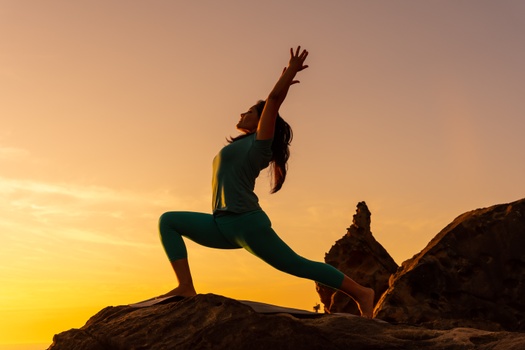
Inhale and extend both arms over your head and feel your upper and lower body opening up. Repeat this on the other side and then release.
Part 2: Step-by-Step Instructions to Perform Hanumanasana
The following are steps to practice Monkey pose:
Step 1- Start in Samasthiti, inhale, and lift your arms up in Mountain pose.
Step 2- Exhale and bend forward into Uttansana. Gently lift halfway up and look forward.
Step 3- Next, inhale and exhale as you extend your feet behind you one by one into Plank pose.
Step 4- Inhale deeply, curl in your toes and lift your hips into Downward-Facing Dog.
Step 5- Step your right foot forward, place your left knee on the ground and get into Cescent Moon pose. Keep your back straight, hips square, and spine straight in this pose.
Step 6- Keep breathing, and gently straighten your right leg in front. Place your glutes square on the mat and extend both legs straight on each side.
Step 7- Take a deep breath, straighten your spine, and extend your arms overhead and join your palms.
Step 8- Hold this pose for 5 to 10 deep breaths, then release. Repeat the same on your left side, and then relax in Child's pose.
Breath Awareness:
Inhale - When in Mountain pose, Downward-Facing Dog pose, Crescent Moon pose, and when your arms are overhead in Monkey pose.
Exhale - While relaxing in Uttansana or a Child’s pose.
Inhale & Exhale - While transitioning in the flow or holding the stretch for a longer duration.
Performance Duration for Beginners: Hold Monkey pose for 15 to 30 seconds.
Performance Duration for Advanced: Hold Monkey pose for 60 to 90 seconds.
Part 3: Things to Keep in Mind
It’s important to keep a few things in mind before practicing Monkey pose:
Avoid overextending: If your hamstrings or inner thighs feel too tight to stretch in the Hanumanasana pose, avoid overextending your muscles. Make sure your legs, groin, and glute muscles are warmed up and open.
Keep your hips square: Keeping your hips square means that when your glutes are placed on the ground in the split position, both glutes are touching the ground. Also make sure your spine is aligned straight so that your upper body weight is equally distributed on each of your glute muscles.
Tighten your core: Loose core muscles can create a shaky foundation, making it hard to hold the stretch for longer. An engaged core will help you stabilize your seated Monkey position and support your transition into Over-Head Extended Arms Hanumanasana with more control.
Part 4: Relaxing Poses After Hanumanasana
Follow the below counterpose sequences to unwind tension from your legs and spine after your Hanumanasana pose practice:
1. Eka Pada Kapotasana (Sleeping Pigeon Pose) - From a Downward-Facing Dog stance, bring your right leg forward in between your palms. Bend your right leg so your shin is aligned straight with your yoga mat. Keep your left leg straight and extended behind you.
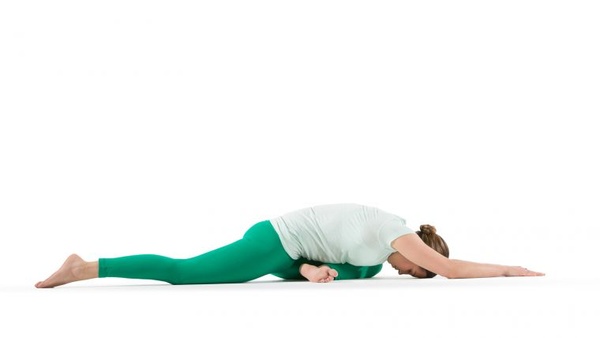
Square your glutes and place them on the mat. Squeeze your inner thighs together, inhale and extend both arms overhead. Now, exhale and bend your torso forward over your front leg on the ground.
Hold the pose on each side until your spine and glutes feel cozy and relaxed.
2. Ananda Balasana (Reclining Happy Baby Pose) - This pose will help you release any remaining tension in your legs, pelvis, or glutes, and bring your spine back to its neutral shape.

Inhale, lie down on your back, and grab the outside edges of your feet while bending your legs. Exhale and press your back, core, and legs close to the ground.
Hold here for a few seconds. If your glutes or tailbone feels stiff, add a rocking motion to your Happy Baby posture to loosen up any tight areas.
